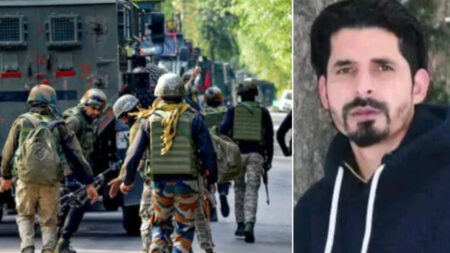Christian missionaries have been luring people to convert themselves for quite a while. Still, according to reports, Sikhs in Punjab are being disturbed by the missionaries asking them to convert themselves for a better life.
There have been reports that Christian Missionaries have been trying to convert the Sikh youths and mostly in the border areas of Punjab, which has been highly disturbing for the people living there.
It has been reported that they are targeting the rural and border areas most like Gurdaspur, Batala, Ludhiana, Ajnala, Jalandhar, Fatehgarh Churia, Dera Baba Nanak, Majitha, and Amritsar.
Jathedar of Sri Akal Takht Giani Harpreet Singh, the officiating person, has suspected that the Christian missionaries are enticing the poor Sikh youths to convert themselves for a better lifestyle.
In some cases, the Sikh youths have been offered a high amount of money and other allurements like visas for the US and Canada.
Bibi Jagir Kaur, the president of Shiromani Gurdwara Parbandhak Committee, has recently launched a counter-drive by sending approximately 150 teams of Sikh preachers who are trying to convince the Sikh youths not to convert themselves to any other religion.
The SGPC drive is named ‘Ghar Ghar Andar Dharamsaal,’ which means ‘sacred shrine inside every home ‘where they have seven preachers in each team that has been sent to Majha, Malwa, and Doaba regions of Punjab.
“Our teams of preachers stay in each hamlet for a week, inviting the Sikh Sangat to a recitation of Gurbani, Sikh’rehat Maryada (code of conduct), Sikh history, and religious concepts,” Bibi Jagir Kaur said. People are given free religious literature on Sikhism in order to prevent them from converting to other religions.”
Christian Missionary
A missionary is an associate of a religious group sent into rural s to encourage their faith or provide services like education, literacy, social justice, health care, and economic development.
It’s mentioned in the Bible that Jesus Christ uses the word when sending the disciples to preach the gospel in his name, and the word mission itself was originated in 1598 when the Society of Jesus, known as Jesuits, sent their members overseas.
In the Bible, Jesus Christ is documented as instructing the apostles to make disciples of all nations (Matthew 28:19–20, Mark 16:15–18).
This section is referred to by Christian missionaries as the Great Commission and inspires missionary work.
The Lausanne Congress of 1974 defined the term Christian mission as “to form a viable indigenous church-planting movement,” and the missionaries are there in many countries around the world.
Christianity in Punjab, India
The Christians of colonial India were involved in the Indian National Congress and the broader Indian independence struggle, with the All-India Conference of Indian Christians advocating for swaraj and opposing India’s partition.
The All-India Conference of Indian Christians, which met in Lahore in December 1922 and drew a considerable number of Punjabis, decided that the Church in India’s clerics should be selected from the ranks of Indians rather than foreigners.
The AICIC further said that Indian Christians would not tolerate discrimination based on race or skin color. S. K. Datta, the principal of Forman Christian College in Lahore, was elected president of the All-India Conference of Indian Christians.
He represented the Indian Christian community at the Second Round Table Conference, where he agreed with Mahatma Gandhi’s views on minorities and the depressed classes.
The All-India Conference of Indian Christians formed a joint committee with the Catholic Union of India on October 30, 1945.
It passed a resolution stating that “the profession, practise, and propagation of religion should be guaranteed in the future constitution of India, and that a change of religion should not involve any civil or political disability.”
In front of the British Parliamentary Delegation, “the committee members unanimously endorsed the motion for independence and expressed entire confidence in the future of the community in India.”
The joint committee’s office was established in Delhi, with M. Rahnasamy, Vice-Chancellor of Andhra University, as President and B.L. Rallia Ram, of Lahore, as General Secretary. Six members of the joint committee were elected to the Constituent Assembly’s Minorities Committee.
The All-India Conference of Indira Gandhi had a joint committee meeting on the 16th and 17th of April 1947.
In All India Conference of Indian Christians and the Catholic Union of India wrote a 13-point letter to the Constituent Assembly of India, requesting religious freedom for both organizations and individuals, which was reflected in the Indian Constitution.
In Punjab, India, Christians account for 1.3 percent of the overall population. The state’s other religions are Hindus, Muslims, and Sikhs. In 1834, missionaries John Lowrie and William Reed traveled there.
The Church of North India’s Diocese of Amritsar, as well as the Roman Catholic Diocese of Jalandhar, are both based in Punjab.
A Christian congregation can be found in thousands of communities. Between 1881 and 1891, the Christian population of the Punjab, which was still undivided at the time, grew quickly.
United Churches of North India (UCNI), Protestant Church, Methodist Church, Presbyterian Church, Roman Catholic Church, Eternal Light Ministries, Kashmir Evangelical Fellowship, and the Pentecostal Mission, Pentecostal, and Independent Churches are some of the denominations.













